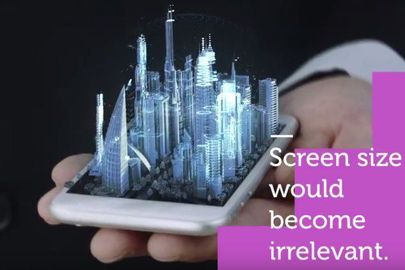3D technology to smartphone

A team of scientists from RMIT University and the Beijing Institute of Technology have designed the 'world's thinnest' hologram. It is said the hologram is capable of being integrated into everyday products such as smartphones.
Lasers, 'astronauts' and holographic heads: behind the scenes at Eric Prydz's EPIC 5.0 show
Lasers, 'astronauts' and holographic heads: behind the scenes at Eric Prydz's EPIC 5.0 show
By VICTORIA TURK
The work was led by RMIT's Min Gu led the project and claims the holographic technology can be seen without 3D goggles and is 1,000 times thinner than human hair. The academics dubbed the technology a 'nano hologram'.
At present, the constraints that hold back holographic technology lie in the limits of optical thickness. Regular holograms modulate light to project the illusion of a three-dimensional shape. But this needs to be within the parameters of the optimal thickness limit – computer-generated holograms are too large to fit atop smartphones and therefore have limited practical application.
Now, Min and the team behind the work has developed a 25 nanometer hologram using topological insulator material. It has a lower refractive index on the surface layer, but an ultrahigh refractive index in bulk. This thin insular film can enhance the holographic image without sacrificing its compact design.
Congratulations @taqi123! You have received a personal award!
Click on the badge to view your Board of Honor.
Do not miss the last post from @steemitboard:
Congratulations @taqi123! You received a personal award!
You can view your badges on your Steem Board and compare to others on the Steem Ranking
Do not miss the last post from @steemitboard:
Vote for @Steemitboard as a witness to get one more award and increased upvotes!